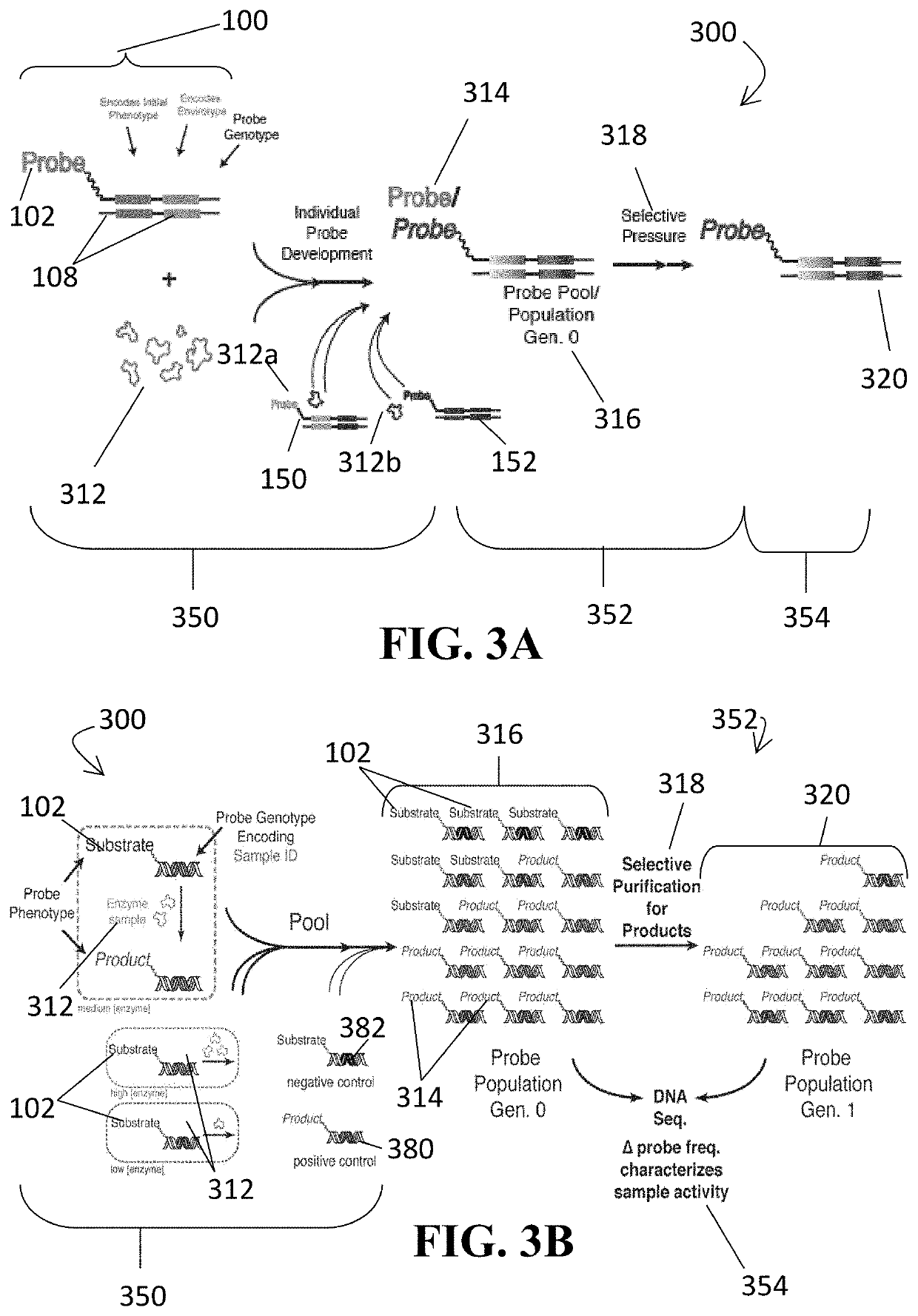Systems and methods for proteomic activity analysis using dna-encoded probes
a proteomic activity and encoded probe technology, applied in the field of systems and methods for proteomic activity analysis using encoded probes, can solve the problems of poor multiplexing capability, and requiring specialized equipment and devices
- Summary
- Abstract
- Description
- Claims
- Application Information
AI Technical Summary
Benefits of technology
Problems solved by technology
Method used
Image
Examples
Embodiment Construction
[0044]For the purposes of promoting an understanding of the principles of the present disclosure, reference will now be made to the embodiments illustrated in the drawings and specific language will be used to describe the same. It will nevertheless be understood that no limitation of scope is intended by the description of these embodiments. On the contrary, many modifications and other embodiments of the technology described herein will come to mind to one of skill in the art to which the present disclosure pertains having the benefit of the teachings presented in the present descriptions and associated figures. Therefore, it is understood that this disclosure covers any such alternatives, modifications, and equivalents as may be included within the spirit and scope of this application as defined by the specification and appended claims. As previously noted, while this technology may be illustrated and described in one or more preferred embodiments, the compositions, systems and m...
PUM
 Login to View More
Login to View More Abstract
Description
Claims
Application Information
 Login to View More
Login to View More - R&D
- Intellectual Property
- Life Sciences
- Materials
- Tech Scout
- Unparalleled Data Quality
- Higher Quality Content
- 60% Fewer Hallucinations
Browse by: Latest US Patents, China's latest patents, Technical Efficacy Thesaurus, Application Domain, Technology Topic, Popular Technical Reports.
© 2025 PatSnap. All rights reserved.Legal|Privacy policy|Modern Slavery Act Transparency Statement|Sitemap|About US| Contact US: help@patsnap.com



